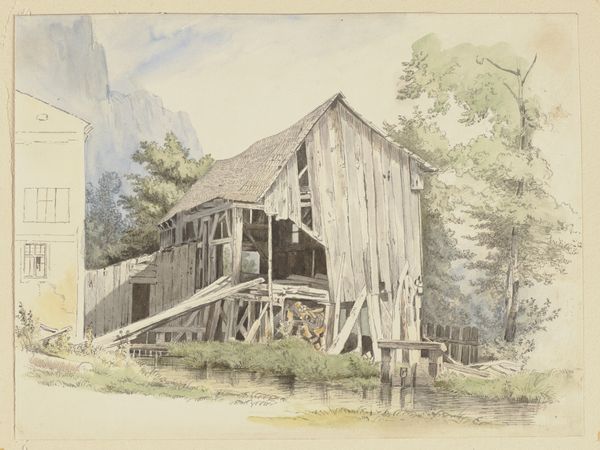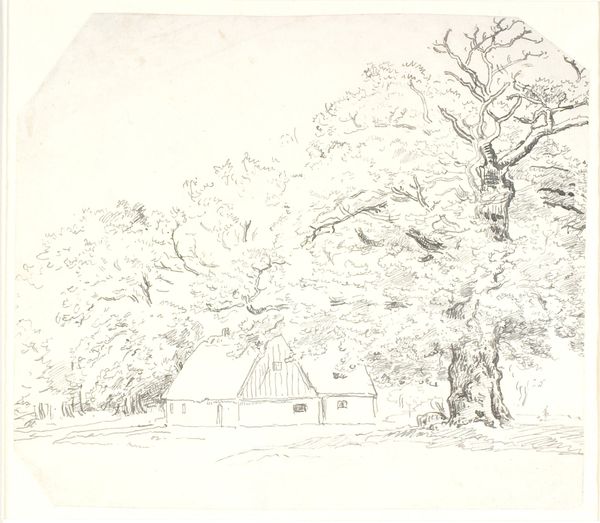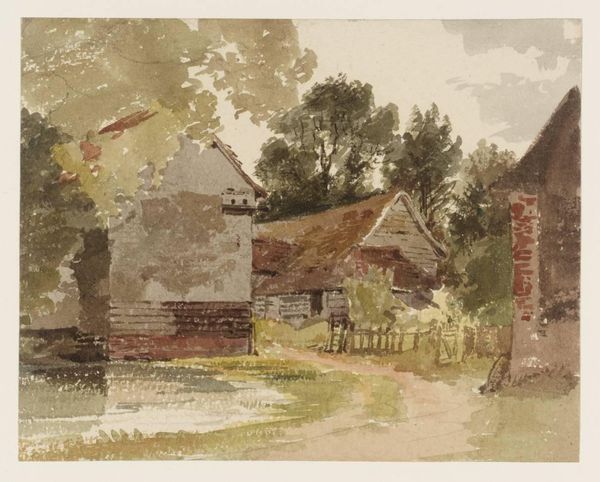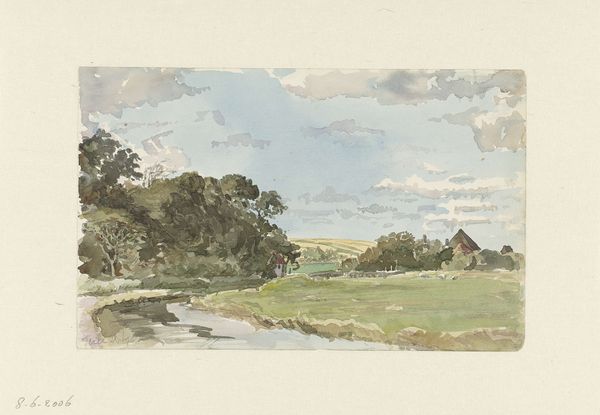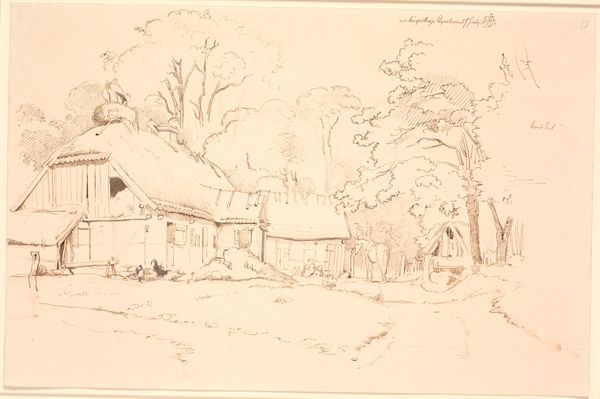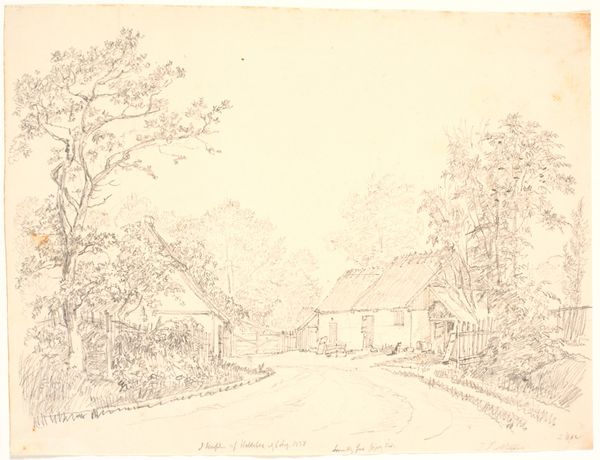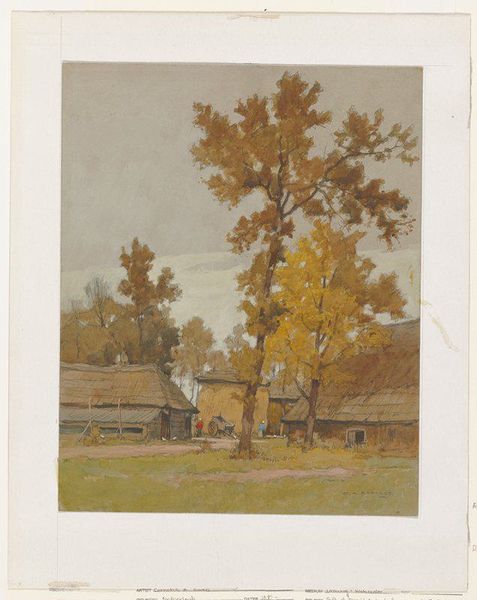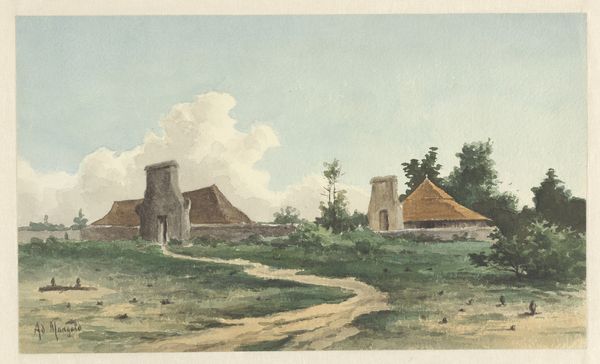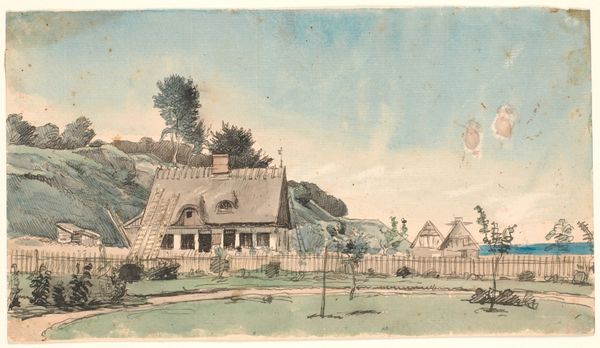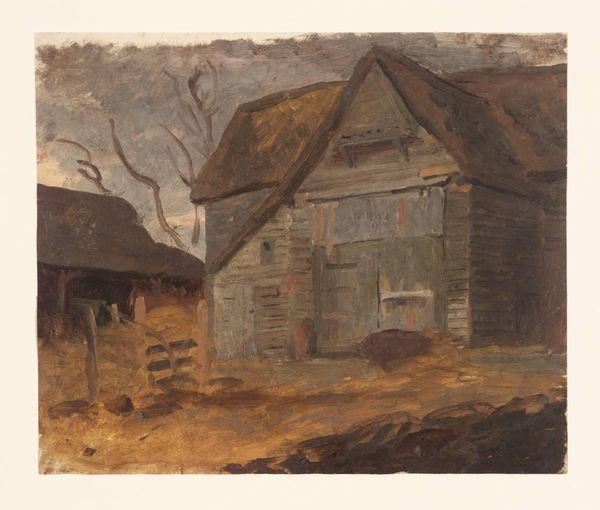
Dimensions: 9 13/16 x 12 in. (24.92 x 30.48 cm) (sheet)
Copyright: Public Domain
Alfred Parsons created "A Bedfordshire Farmyard" using watercolor on paper, offering us a glimpse into the rural English countryside, and the artistic interpretations of idyllic landscapes during the late 19th and early 20th centuries. Parsons' work reflects a nostalgic view of rural life, one that was rapidly changing due to industrialization and urbanization. Through his artistic style, we see the cultural values and social structures of his time, particularly the romanticization of nature. "A Bedfordshire Farmyard" also touches on themes of land ownership and labor, as well as the emotional and cultural connections people have with the land. As we consider Parsons' artistic choices, let's reflect on the societal forces that shaped his vision and the deeper implications of representing the countryside in a rapidly changing world.
Comments
minneapolisinstituteofart almost 2 years ago
⋮
As a painter, prolific illustrator for Harper’s Magazine and books by popular English authors, also as a designer of gardens in Britain and America, Alfred Parsons played a role in catering to and shaping his American contemporaries’ concept of “Englishness.” In 1879, American author Henry James wrote, “Was it [in America] that Mr. Parsons learned so well how Americans would like England to appear'...The England of his pencil... is exactly the England that the American imagination, restricted to itself, constructs from the poets, the novelists, from all the delightful testimony it inherits." Bedfordshire, about 50 miles north-northwest of London, is a picturesque area of rolling farmland dotted by towns. In Parsons’ time, it would have been seen as accessible yet unspoiled by modern life.
Join the conversation
Join millions of artists and users on Artera today and experience the ultimate creative platform.



